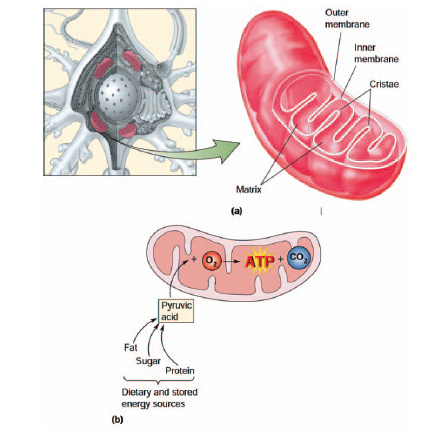Basic BiologyCells |
What is ATP? |
ATP (adenosine triphosphate) is the universal energy currency of a cell. Its secret lies in its structure. ATP contains three negatively charged phosphate groups. When the bond between the outermost two phosphate groups is broken, ATP becomes ADP (adenosine diphosphate). This reaction releases 7.3 kilocalories/mole of ATP, which is a great deal of energy by cell standards.

This illustration describes the generation of ATF; which is used by cells for energy. (From Bear, Mark F., Connors, Barry W., and Paradiso, Michael A. Neuroscience: Exploring the Brain. 2nd Ed. Philadelphia: Lippincott, Williams & Wilkins, 2001.)
